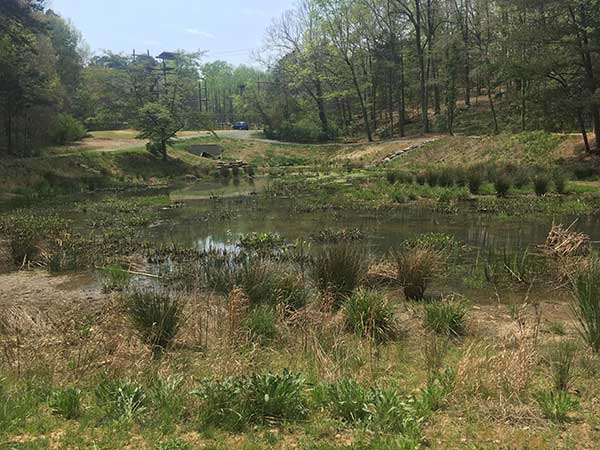Chapel Creek Wetland at Outdoor Education Center
The Chapel Creek Wetland, located at the UNC-Chapel Hill Outdoor Education Center (OEC), was created to improve water quality and to provide aquatic habitat for fish, macroinvertebrates, and other wildlife. To construct the wetland, an old golf course pond was excavated creating deep and shallow zones throughout the wetland. The deeper forebay at the entrance collects sediment and pollutants that adhere to it such as phosphorus, metals, and pesticides. The shallow zones support microbes and other aquatic life that remove dissolved pollutants from the water. The wetland was planted with adaptable and resilient native species, such as Arrow Arum, Sedge, and Pickerel Weed, to help filter out sediment and pollutants. Boulder steps and drop pools were added to slow the water as it enters the wetland and protect the banks from erosion.
This ecosystem enhancement project was funded by UNC-Chapel Hill and an USEPA/NCDEQ 319 grant. With regular maintenance, the OEC wetland removes over a ton of sediment and 50 pounds of pollutants per year from stormwater runoff, protecting downstream ecosystems and water quality in Jordan Lake.


